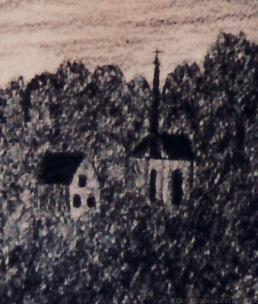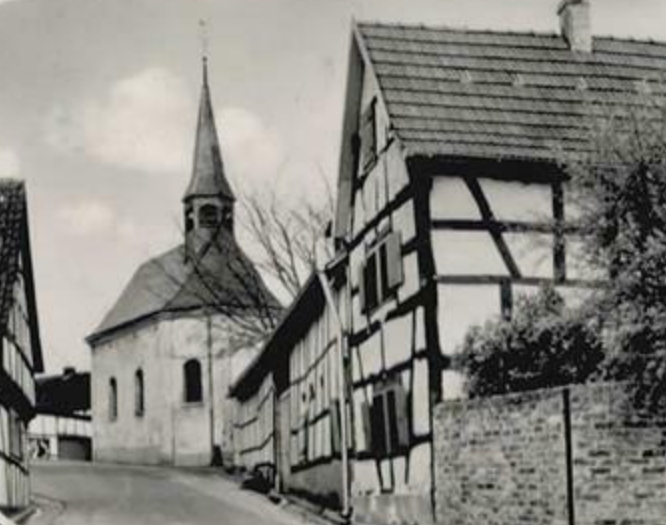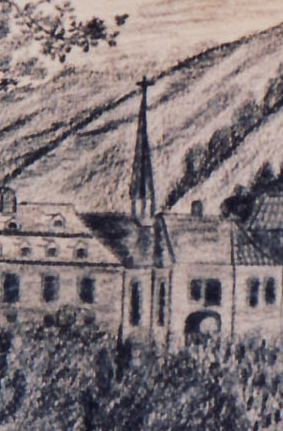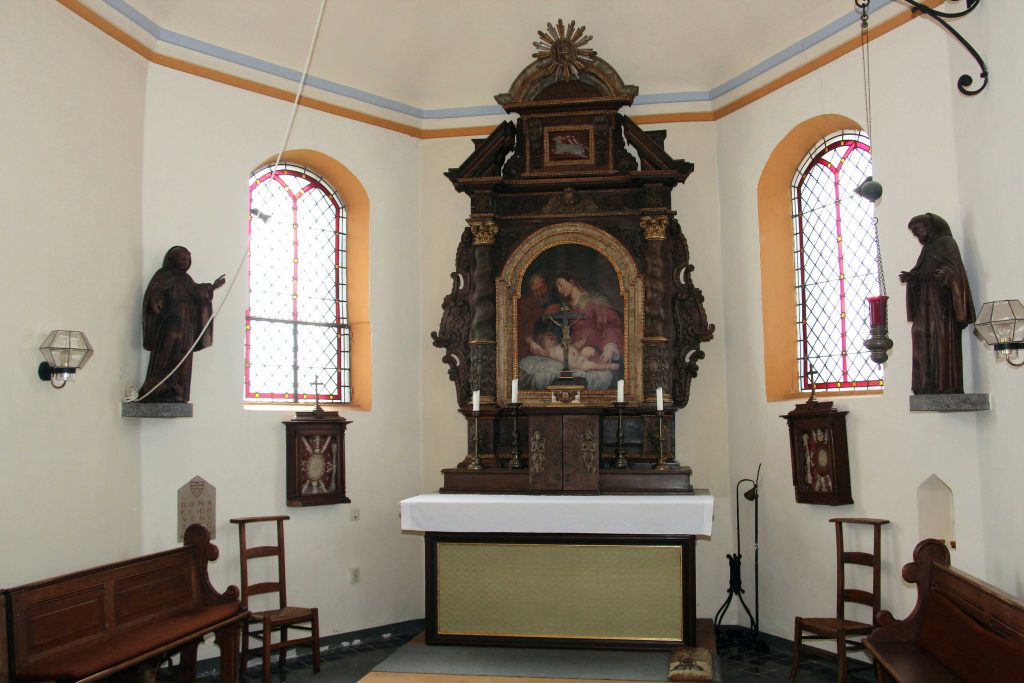
At the top of a hill in Oedekoven, Nordhrhein-Westfalen, Germany, sits a small chapel built by the townspeople in 1756. It was given the name of The Seven Pleasures of Mary when consecrated in 1757, but the name was later changed to St. Mary’s Marriage.
This small chapel, 20 feet long, and 13-14 feet wide, was too small to hold the townspeople for Mass, so was used for saying a communal rosary, and private prayer. For Mass and sacraments such as baptism, the people of Oedekoven traveled to the nearby town of Lessenich to St. Lawrence Catholic Church. Oedekoven did not have its own church until 1947 when St. Mary’s Ascension was constructed near the chapel.1

Why does this small chapel, included in the chalk drawing given to Peter Joseph Hubert Fassbender in 1904, hold a special meaning to the Fassbender family? It is the altarpiece.
This altarpiece graced the chapel at Tempelhof until the fire of 1864. The fire burned part of the farmyard to the outer walls, damaging the adjoining manor house and chapel. At this time, the chapel was decommissioned, and the altar and pictures were transferred to the Oedekoven chapel, St. Mary’s Marriage.2

Wikiwand’s translation describes the altar this way: “The rococo altarpiece (late baroque) and the figures were restored [in 1981]. The altarpiece and the figure of Mary above the entrance came to this chapel only in 1864, after the chapel in the temple courtyard, where they originally were, was destroyed in a fire. The altarpiece was probably originally colored. In the center is the image of the Holy Family adoringly looking at the newborn child. Above that the lamb lying on the book with the seven seals (Rev 5-8 EU). In the round arch of the altarpiece is the Christ monogram “IHS” in a halo, often translated as “Jesus, Savior, Blessed.”3
It is absolutely amazing to me to think that I could travel to Oedekoven, Germany, and enter the chapel that was part of the community when the Fassbender and Nettekoven families were living there, and stand before the altar that was first installed in the chapel in Tempelhof.

Sources
